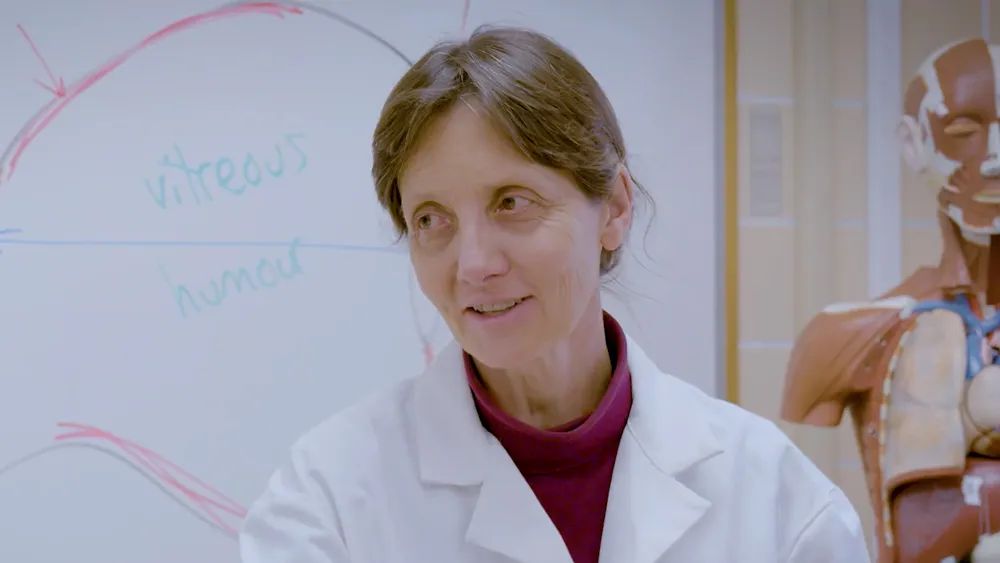Heading 1
Heading 2
Heading 3
Heading 4
Heading 5
Heading 6
Lorem ipsum dolor sit amet, consectetur adipiscing elit, sed do eiusmod tempor incididunt ut labore et dolore magna aliqua. Ut enim ad minim veniam, quis nostrud exercitation ullamco laboris nisi ut aliquip ex ea commodo consequat. Duis aute irure dolor in reprehenderit in voluptate velit esse cillum dolore eu fugiat nulla pariatur.
Block quote
Ordered list
- Item 1
- Item 2
- Item 3
Unordered list
- Item A
- Item B
- Item C
Bold text
Emphasis
Superscript
Subscript
About This Simulation
Help Yummy Food Inc survive the shut down of their food factory! Learn about the principles of the analytical technique carbon-13 NMR and interpret the spectrum of the mysterious unlabelled compound they have used in their food and drink.
Learning Objectives
- Recognize when 13C-NMR techniques can be usefully applied
- Describe the factors that give rise to chemical shifts
- Prepare a sample for 13C-NMR analysis
- Classify the resonances in example 13C spectra and relate them to molecular structure
About This Simulation
Lab Techniques
- Carbon NMR
- 13-Carbon Nuclear Magnetic Resonance (13C-NMR)
Related Standards
- Early Stage Bachelors Level
- Intermediate Stage Bachelors Level
- EHEA First Cycle
Learn More About This Simulation
NMR saves the day! In this simulation, you will learn about the principles of the analytical spectroscopic technique known as nuclear magnetic resonance. Understand the factors that cause the resonance peaks and train your chemistry mind to interpret the complete spectra.
Why Carbon-13?
In our very fun minigame, learn about the characteristics of the carbon-13 nuclei and why the isotope of carbon is detected instead of the carbon-12 we know to be in the periodic table. Explore more features of the atomic nuclei that are important for nuclear magnetic resonance technology such as gyromagnetic ratio and natural abundance.
Chemical Shifts
Why do we get peaks at different chemical shifts? Explore the characteristics of atoms in a functional group that alters the position of the peaks in the Carbon-13 NMR spectra. Learn in more depth the effects of electronegativity, electron induction, and diamagnetic anisotropy and in what molecular examples do these effects take place.
Apply your newly gained knowledge about the functional groups and resonance peaks to interpret the spectra, and grasp how these effects can alter the chemical shift of the peaks. Continue your learning and get some practice using the chemical shift range to identify the presence of functional groups in the molecular structure of your solid sample.
Sample preparation
Let’s go to the lab bench! Familiarise yourself with the process of sample preparation of an organic solid compound. Explore the equipment and the reagents such as the solvents and the reference compound.
Interpret the final spectrum to uncover the molecular structure of the unknown compound.
Become the scientific detective we know you are and solve the ultimate chemystery!
For Science Programs Providing a Learning Advantage
Boost STEM Pass Rates
Boost Learning with Fun
75% of students show high engagement and improved grades with Labster
Discover Simulations That Match Your Syllabus
Easily bolster your learning objectives with relevant, interactive content
Place Students in the Shoes of Real Scientists
Practice a lab procedure or visualize theory through narrative-driven scenarios


FAQs
Find answers to frequently asked questions.
Heading 1
Heading 2
Heading 3
Heading 4
Heading 5
Heading 6
Lorem ipsum dolor sit amet, consectetur adipiscing elit, sed do eiusmod tempor incididunt ut labore et dolore magna aliqua. Ut enim ad minim veniam, quis nostrud exercitation ullamco laboris nisi ut aliquip ex ea commodo consequat. Duis aute irure dolor in reprehenderit in voluptate velit esse cillum dolore eu fugiat nulla pariatur.
Block quote
Ordered list
- Item 1
- Item 2
- Item 3
Unordered list
- Item A
- Item B
- Item C
Bold text
Emphasis
Superscript
Subscript
A Labster virtual lab is an interactive, multimedia assignment that students access right from their computers. Many Labster virtual labs prepare students for success in college by introducing foundational knowledge using multimedia visualizations that make it easier to understand complex concepts. Other Labster virtual labs prepare learners for careers in STEM labs by giving them realistic practice on lab techniques and procedures.
Labster’s virtual lab simulations are created by scientists and designed to maximize engagement and interactivity. Unlike watching a video or reading a textbook, Labster virtual labs are interactive. To make progress, students must think critically and solve a real-world problem. We believe that learning by doing makes STEM stick.
Yes, Labster is compatible with all major LMS (Learning Management Systems) including Blackboard, Canvas, D2L, Moodle, and many others. Students can access Labster like any other assignment. If your institution does not choose an LMS integration, students will log into Labster’s Course Manager once they have an account created. Your institution will decide which is the best access method.
Labster is available for purchase by instructors, faculty, and administrators at education institutions. Purchasing our starter package, Labster Explorer, can be done using a credit card if you are located in the USA, Canada, or Mexico. If you are outside of North America or are choosing a higher plan, please speak with a Labster sales representative. Compare plans.
Labster supports a wide range of STEM courses at the high school, college, and university level across fields in biology, chemistry, physics, and health sciences. You can identify topics for your courses by searching our Content Catalog.















